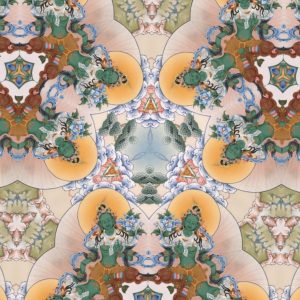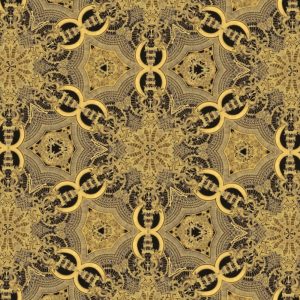From “Words of My Perfect Teacher”
Part Two “The Extraordinary Or Inner Preliminaries”
Chapter One “Taking refuge, the foundation stone of all paths”
by Patrul Rinpoche.
Herein excerpt from subsection II. “How to Take Refuge”
According to the Basic Vehicle, one takes refuge in the Buddha as the teacher, in the Dharma as the path, and in the Sangha as companions along the way.
The general method of the extraordinary Secret Mantra Vehicle is to take refuge by offering body, speech and mind to the teacher, taking the yidams as support and the dakinis as companions.
The special, sublime method of the Vajra Essence is to take refuge in the rapid path whereby one uses the channels as the nirmanakãya, trains the energies as the sambhogakaya and purifies the essences as the dharmakaya.
The ultimate and infallible refuge in the indestructible natural state is based on the primal wisdom inherent in the refuge. That wisdom’s essential nature is emptiness; its natural expression is clarity; and its compassion is all-pervasive.” Taking refuge here means to realize in one’s own mindstream, with total confidence, the great inseparability of these three aspects of primal wisdom.
Having gained a clear understanding of all these ways in which refuge should be taken, we now go on to the actual practice of taking refuge.
First, visualize the field of merit in the presence of which you will take refuge.
Consider that the place where you are is all a Buddhafield, beautiful and pleasant, made of all sorts of precious substances. The ground is as smooth as the surface of a mirror, without any hills, valleys or irregularities. In the middle, in front of you, grows a wish-fulfilling tree with five great branches spreading from its trunk. Its perfect leaves, flowers and fruit stretch so far to the east, south, west and north that they fill the entire sky, and every branch and twig is hung with a multitude of entrancing jewels and bells of many kinds.
On the central branch is a jewelled throne upheld by eight great lions. Seated upon the throne, on a seat consisting of a multi-coloured lotus, a sun and a moon, is your own glorious root teacher, incomparable source of compassion, embodiment of all past, present and future Buddhas, appearing in the form of the great Vajradhara of Oddiyana. His body is of a compelling white colour with a rosy gleam. He has one face, two arms and two legs and is seated in the royal posture. In his right hand he holds a golden five-pronged vajra with the threatening gesture. In his left hand, which rests in the gesture of meditation, he holds a skull-cup containing a vase filled with the ambrosia of deathless wisdom. The lid of the vase is topped by a wish-fulfilling tree. He wears a brocade cloak, monastic robes and a long sleeved blue tunic, and on his head the lotus hat. Seated in union with him is his consort, the white däkini Yeshe Tsogyal, holding a hooked knife and a skull cup.
Visualize him like this in the space before you, facing toward you. Above his head are all the lamas of the lineage, seated one above the other, each not quite touching the one below. The teachers of the general tantra transmission are innumerable, but here we visualize particularly the main figures of the Heart-essence lineage of the Great Perfection: Samantabhadra, the dharmakaya; Vajrasattva, the sambhogakaya; Garab Dorje, the nirmanakäya; the master Mañjusrimitra; Guru Sri Simha; the learned Janasûtra; the great pandita, Vimalamitra; Padmasambhava of Oddiyana and his three closest disciples, the King, Subject and Consort – the Dharma king Trisongdetsen, the great translator Vairotsana and the däkini Yeshe Tsogyal; the omniscient Longchen Rabjampa; and Rigdzin Jigme Lingpa. Each of them should be visualized with their own particular ornaments and attributes. They are all surrounded by an inconceivable multitude of yidam deities of the four sections of tantra and by dakas and dakinis.
On the front branch is the Buddha, the Conqueror Sakyamuni, surrounded by the thousand and two perfect Buddhas of this Good Kalpa as well as all the other Buddhas of the past, present and future and of the ten directions. All of them are in the supreme nirmanakya form, garbed in monastic robes, bearing all the thirty-two major marks of Buddhahood – the crown protuberance, the wheels marked on the soles of the feet and so on – and the eighty minor signs. They are seated in the vajra posture. Some are white, some yellow, some red, some green and some blue. Inconceivable rays of light stream forth from their bodies.
On the right-hand branch visualize the eight great Close Sons, headed by the Bodhisattva Protectors of the Three Families – Mañjusri, Vajrapani and Avalokitesvara – and surrounded by the whole noble sangha of Bodhisattvas. They are white, yellow, red, green and blue. They all wear the thirteen ornaments of the sambhogakaya, and are standing with both feet together.
On the left-hand branch visualize the two principal sravakas, Sariputra and Maudgalyayana, surrounded by the noble sangha of sravakas and pratyekabuddhas. All are white in colour, and dressed in the three monastic robes. They too are standing, holding their staffs and alms-bowls in their hands.
On the rear branch visualize the Jewel of the Dharma in the form of piles of books. Topmost of them, encased in a attice of lights, are the six million tour hundred thousand tantras of the Great Pertection, the label of each volume facing towards you. All these books appear very clearly and distinctly, and resonate with the spontaneous melody of the vowels and consonants.
Between the branches are all the glorious Dharma-protectors, both the wisdom protectors and the protectors constrained by the effect of their past actions. The male protectors all face outwards; their activity is to prevent outer obstacles from coming in, protecting us from hindrances and conditions unfavourable to practising the Dharma and attaining enlightenment. The female protectors all face inwards; their activity is to keep inner accomplishments from leaking out.
Think of all these figures of refuge, with their immeasurable qualities of knowledge, love and power, leading you as your only great guide.
Imagine that your father in this lifetime is with you on your right and your mother on your left. In front of you, gathered together in an immense crowd covering the surface of the earth, are all beings of the three worlds and the six realms of existence, the first row consisting of all adversaries who detest you and all obstacle makers who harm you, All these beings with you are standing up, with the palms of their hands joined. Expressing respect with your body, do prostrations. Expressing respect with your speech, recite the refuge-prayer. Expressing respect with your mind, cultivate the following thought:
“O Teacher and Three Jewels, whatever happens to me, favourable or unfavourable, pleasant or painful, good or bad, whatever sickness and suffering befall me, I have no other refuge nor protection than you. You are my only protector, my only guide, my only shelter and my only hope. From now on until I reach the very heart of enlightenment, I place all my trust and faith in you. I shall neither seek my father’s counsel, nor ask my mother’s advice, nor decide on my own. It is you, my teacher and the Three Jewels, that I take as my support. It is to you that I make my offerings. I pledge myself to you alone. I have no other refuge, no other hope than you!”
With this burning conviction, recite the following text:
In the Sugatas of the Three Roots, the true Three Jewels,
In the bodhicitta, nature of the channels, energies and essences
And in the mandala of essential nature, natural expression and compassion, I take refuge until I reach the heart of enlightenment.
When the time comes to conclude the session, visualize that your yearning devotion causes innumerable rays of light to stream out from the refuge deities. The rays touch you and all sentient beings, and, like a flock of birds scattered by a slingstone, you all fly up with a whirring sound and dissolve into the assembly of deities.
Then the surrounding deities melt into light, from the outside inwards, and dissolve into the teacher in the centre, embodiment of the three refuges. All the deities above the teacher’s head also dissolve into him.
The teacher then dissolves and vanishes into light. Rest for as long as you can in the primordial state free from all elaboration, the dharmakäya, without any movement of thought.
As you arise from this meditation, dedicate the merit to the infinity of beings with these words:
Through the merit of this practice,
May I swiftly accomplish the Three Jewels
And establish every single being, Without exception, on their level.
Remember the deities of the refuge constantly, in all situations. When you walk, visualize them in space above your right shoulder and imagine that you are circumambulating them. When you sit, visualize them above your head as the support of your prayers. When you eat, visualize them in your throat and offer them the first part of your food or drink. When you sleep, visualize them in your heart centre. This practice is essential to dissolve delusions into clear light.
Whatever you are doing, never separate from a clear mental image of the refuge deities. Entrust yourself with total confidence to the Three Jewels and devote yourself entirely to taking refuge.







